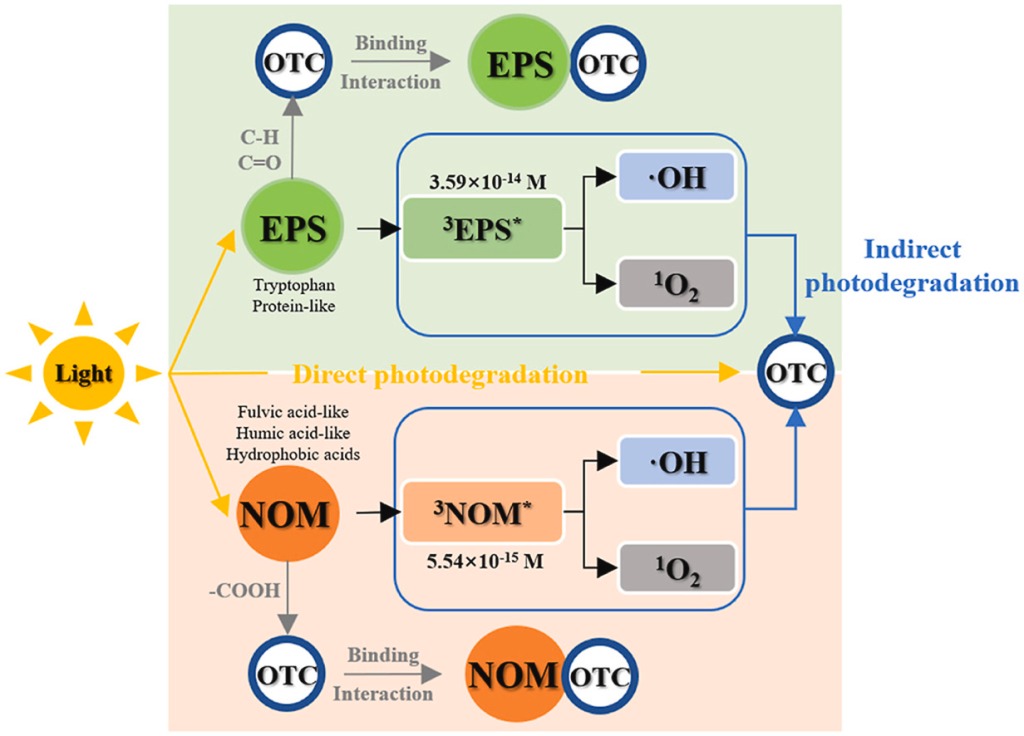
Authors
Yu Wang, Xinye Gong, Deying Huang, Shuwen Yan, Jibiao Zhang
Surface water contains a large amount of dissolved organic matter (DOM). Interactions between DOM and micropollutants have a significant impact on micropollutant degradation. In this study, algal extracellular polymeric substances (EPS) and natural organic matter (NOM) were selected as two DOM sources and oxytetracycline (OTC) as a representative micropollutant. EPS was mainly composed of tryptophan and protein-like organics, while NOM was mainly composed of fulvic acid-like, humic acid-like, and hydrophobic acid components. In addition, OTC degradation significantly decreased when bound with EPS and the C=O and C–H bonds of CH2 or CH3 groups may be involved in binding EPS and OTC, respectively, while –COOH may be involved in the binding of NOM and OTC. Furthermore, triplet intermediates were found to play a major role in OTC photodegradation in both EPS and NOM, with the contribution calculated as 49.96% and 44.61%, respectively. Steady-state concentrations of 3EPS* in EPS and 3NOM* in NOM were 3.59 × 10−14 mol L−1 and 5.54 × 10−15 mol L−1, respectively. These results provide new insights into the degradation of antibiotic-containing wastewater in the natural environment or engineering applications.
